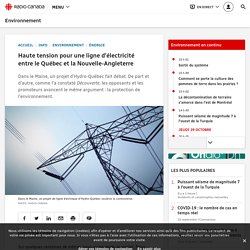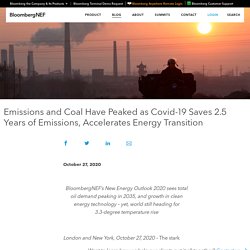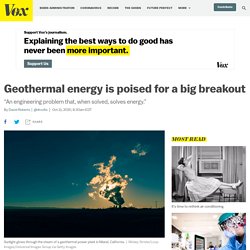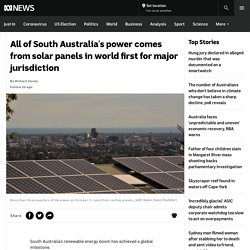

AIEQ - Grande conférence virtuelle de l'AIEQ Billets, mer, 25 nov. 2020 à 08:30. PRIX (jusqu'au 6 novembre, 17h) : MEMBRE : 199 $ + taxes (Entrer votre code membre dans la case code promotionnel) NON MEMBRE : 305 $ + taxes N’oubliez pas d’aller visiter les kiosques virtuels de nos exposants 8h Denis Tremblay, PDG de l’AIEQ 8h40 Électrification et efficacité énergétique : défis et enjeux Jonatan Julien, ministre de l’Énergie et des Ressources naturelles 9 h 15 Productivité énergétique — Amorcer la décarbonisation en stimulant l’économie !

Johanne Whitmore, chercheuse principale à la Chaire de gestion du secteur de l'énergie à HEC Montréal 9 h 45 – Les principales stratégies pour améliorer la productivité énergétique. H2 MA 27Oct2020 HQ IRH version3q. Plan actions 2020 2023 Strategie energetique vf2 1 1. Haute tension pour une ligne d’électricité entre le Québec et la Nouvelle-Angleterre. Si Matt Wagner nous a fait grimper jusqu’ici, c’est pour nous faire admirer la vue, mais surtout pour dénoncer le projet de ligne de transport d’électricité qu’Hydro-Québec et son partenaire américain comptent faire passer ici, dans le nord du Maine.

Ils n’auraient pas pu choisir un pire endroit, tonne cet adepte de plein air. Du haut de la montagne, on aperçoit des lacs, des collines et des arbres à perte de vue. Martin Coiteux, Marie-France Paquet, Francis Généreux, Martin Lefebvre - CORIM. Emissions and Coal Have Peaked as Covid-19 Saves 2.5 Years of Emissions, Accelerates Energy Transition. BloombergNEF’s New Energy Outlook 2020 sees total oil demand peaking in 2035, and growth in clean energy technology – yet, world still heading for 3.3-degree temperature rise London and New York, October 27, 2020 – The stark drop in energy demand due to the coronavirus pandemic will remove some 2.5 years’ worth of energy sector emissions between now and 2050, according to research company BloombergNEF’s (BNEF) latest New Energy Outlook 2020 (NEO 2020).

BNEF’s latest projection of the evolution of the global energy system over the next 30 years, using its proprietary Economic Transition Scenario, shows that emissions from fuel combustion peaked in 2019. Down approximately 8% in 2020 as a result of the Covid-19 pandemic, energy emissions rise again with economic recovery, but never again reach 2019 levels. From 2027 on, they fall at a rate of 0.7% per year to 2050. Coal-fired power peaks in China in 2027 and India in 2030, collapsing to 12% of global electricity generation in 2050.
Why Vanadium Flow Batteries May Be The Future Of Utility-Scale Energy Storage. Earlier this year, the California Energy Commission (CEC) published a $20 million solicitation to fund research projects for the deployment of long-duration energy storage.

The objective was to develop a clear understanding of the role that long-duration energy storage (10 hours or greater) can play in helping to meet the state’s mandates to decarbonize the electricity sector by 2045. Lithium-ion batteries were excluded from the solicitation. The CEC selected four energy storage projects incorporating vanadium flow batteries (“VFBs”) from North America and UK-based Invinity Energy Systems plc. The four sites are all commercial or industrial facilities that want to self-generate power (like solar) and in some cases have the ability to operate off-grid. Invinity’s total scope is 7.8 megawatt-hours (MWh) of batteries across the four projects. What is a VFB, and how does it differ from the more ubiquitous lithium-ion battery? There are presently commercial applications of V flow batteries. Geothermal energy is poised for a breakout. Geothermal power is the perpetual also-ran of renewable energy, chugging along in the background for decades, never quite breaking out of its little niche, forever causing energy experts to say, “Oh, yeah, geothermal ... what’s up with that?”

Well, after approximately 15 years of reporting on energy, I finally took the time to do a deep dive into geothermal and I am here to report: This is a great time to start paying attention! After many years of failure to launch, new companies and technologies have brought geothermal out of its doldrums, to the point that it may finally be ready to scale up and become a major player in clean energy. In fact, if its more enthusiastic backers are correct, geothermal may hold the key to making 100 percent clean electricity available to everyone in the world. And as a bonus, it’s an opportunity for the struggling oil and gas industry to put its capital and skills to work on something that won’t degrade the planet.
All of South Australia's power comes from solar panels in world first for major jurisdiction - ABC News. South Australia's renewable energy boom has achieved a global milestone.

Key points: All of SA's power came from solar for one hour on October 11The generation of too much solar power can create grid instabilityA new interconnector planned with NSW will help manage the growth of solar power The state once known for not having enough power has become the first major jurisdiction in the world to be powered entirely by solar energy. For just over an hour on Sunday, October 11, 100 per cent of energy demand was met by solar panels alone. "This is truly a phenomenon in the global energy landscape," Australian Energy Market Operator (AEMO) chief executive Audrey Zibelman said. Large-scale solar farms, like the ones operating at Tailem Bend and Port Augusta, provided the other 23 per cent. Any excess power generated by gas and wind farms on that day was stored in batteries or exported to Victoria via the interconnector.
Too much of a good thing? Canadian Institute for Climate Choices.